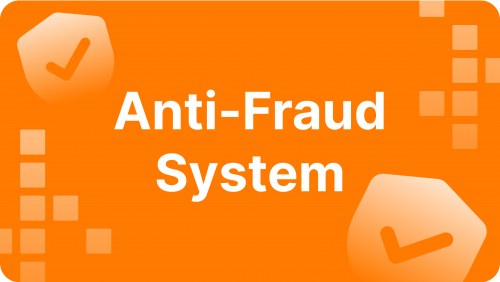8 Challenges of In-House Software Development & How to Deal with Them

The realities of the modern business space form a new concept of cooperation and competition between companies seeking to offer the best quality of their goods and services.
An integral part of the realisation of each company’s product and service ideas is in-house software development, which, with the right approach, becomes a powerful tool for brand evolution, although at the same time, has certain challenges.
The purpose of this article is to reveal the concept of the in-house software development process and to describe the potential challenges it has and the ways to solve them.
Key Takeaways
- In-house software development is the process of implementing software products in accordance with specified requirements using various kinds of specialised systems and applications.
- The most serious obstacles arise in the process of in-house software development in the organisation of the product architecture and ensuring control over ensuring proper quality of execution of all tasks.
What is In-House Software Development?
In-house software development is a set of activities aimed at designing, creating, implementing, testing and maintaining software products in the form of systems, services, and applications built to perform strictly specified functions in accordance with the requirements established by the technical task.
This process involves the full cycle of product creation, from idea to launch, and is usually performed by a team of specialised specialists using specialised software to perform work at each stage of development.
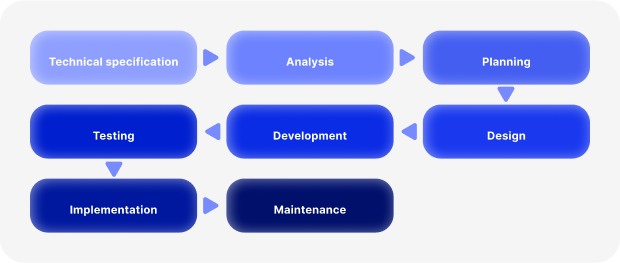
In-house software development is a complex process because it implies the involvement of many resources of different kinds, starting from suitable financing and ending with a reliable team of developers.
By creating software independently, a business is able to realise its own concept of products and services, which allows it to take into account all the nuances and aspects related to visual design, interface, peculiarities of the work of certain elements of the application, etc.
8 Challenges of In-House Software Development
As mentioned above, in-house software development is complex. It represents a set of operations or stages, which, as practice shows, can include agile software development methodologies, among which are Extreme Programming, DSDM (Dynamic Systems Development Method), Scrum, FDD (Feature Driven Development) and BDD (Behaviour-Driven Development), each of which performs a certain amount of work to create the final product.
At the same time, as with any other type of development, in-house software development has its own obstacles and difficulties, such as the following:

1. Product Architecture
The architecture of any system or application is a set of related (often independent) components and elements, each of which is responsible for the work of a particular module or participates in the processes of several separate systems, ensuring their smooth operation by providing a high level of interoperability and connectivity.
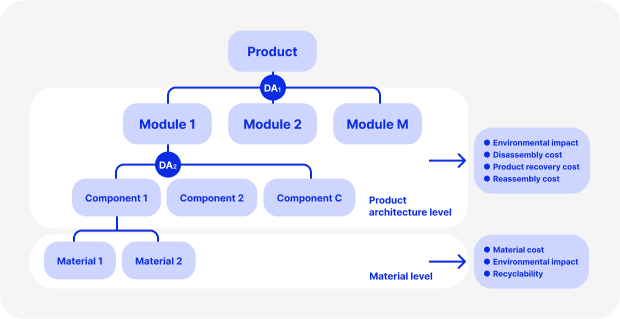
As a rule, any architecture is divided into two parts — frontend and backend, each of which combines a set of, as practice shows, independently functioning systems whose elements exchange data arrays with each other.
Due to the separation and lack of direct communication (or integration), there is a serious delay in the response of one component to the request of another, which reduces the overall efficiency of their interaction and the efficiency of the entire architecture.
2. Quality Assurance
In-house software, depending on its functional features, includes integral elements such as frontend, backend, API solutions, DevOps, and testing.
In practice, all these tasks are often performed by a single specialist, thus eliminating the focus on each individual task in order to take into account the necessary aspects and nuances, as well as certain requirements for the work of this or that element within the software development process, which consequently reduces the overall quality assurance due to the lack of closer attention to the specifics and workings of individual elements of the architecture.
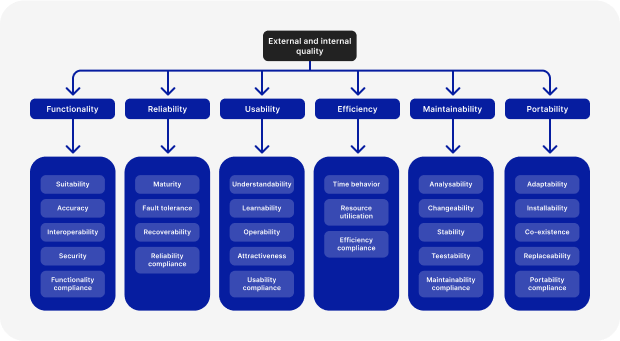
3. Uptime
Any digital product (software) today is subject to several requirements related to such vital characteristics of their efficient operation as scalability, stability, and reliability.
Again, as practice shows, it is seldom possible to achieve a balance between these links due to the lack of competent personnel with deep knowledge and skills to be able to implement complex tasks on the one hand and the lack of awareness of highly specialised software capable of optimising the entire infrastructure to achieve a balance between the characteristics as mentioned earlier.
4. Hiring Pipeline
The modern labour market is oversaturated with young specialists working or willing to work in IT due to its promising and great potential. At the same time, no more than 10 percent of all candidates have a clear idea and deep comprehension of software development processes and their subsequent maintenance.
In this regard, there is an urgent need to use specialised systems and solutions aimed at the effective organisation of the process of hiring new developers in accordance with the requirements and specifics of a particular, separate project under development.
5. Dev Synchronisation
The development team’s work on developing any software is of paramount importance because it represents a solid foundation on top of which the design is overlaid, the interface is worked out, and other important operations are performed.
As a rule, again, taking into account the specifics of the final product, the work of these specialists is very disjointed in coordinating actions, the coherence of which is necessary for a smooth and efficient work process within a particular task.
This leads to a situation in which there needs to be synchronisation between specialists, which leads to a decrease in overall work efficiency.
6. Design
Design is a universal form of emphasising and demonstrating the unique style of each company, which contains the concept and vision expressed in its services and products.
The process of creating a memorable and unique design requires good creativity and many other skills that allow you to apply design solutions in the plane of different company products, preserving the original idea and emphasising the advantages and features of solutions.
7. Software Coverage
For the proper functioning of every single component in the infrastructure of any software, it is necessary to have stable functioning applications of different natures. All these applications can be divided into 4 categories, depending on their purpose: programming languages, data stores, data management and infrastructure.
Since each company uses a large number of software products for each of the above-described purposes, there is a disorganisation of them leading to confusion during their practical application, i.e. lack of unification on a certain feature or characteristic.
8. Client Management Support
The customer management process, and all the secondary elements associated with it, is an essential tool for interacting with any company’s existing and new users.
Thanks to it, it becomes possible to conduct a comprehensive analysis of customer behaviour, accurately determining their mood and needs within the framework of cooperation to systematically improve their experience with the company.
At the same time, software development does not always take into account different kinds of moments within the framework of working with these or those customers, which leads to a lower level of awareness of their interests and needs, which ultimately does not allow you to create a customer-centric product that meets their needs.
Ways to Address In-House Software Development Challenges
As it has already become clear from the last chapter, there are quite a few potential challenges to creating in-house software. However, each problem has its own solution, so the following are ways to overcome the obstacles described above in a straightforward sequence that will help you effectively create software of any format, type, or purpose.
Microservices (MSA)
MSA is the principled organisation of a distributed system based on microservices, their interaction with each other and the environment over a network, and the principles guiding the architecture design, its creation and evolution.
Software with a microservice architecture is divided into small, independent components — microservices. Each of them has its own business task: for example, to manage a catalogue, to store and update the contents of a shopping cart, or to make a payment for an order.
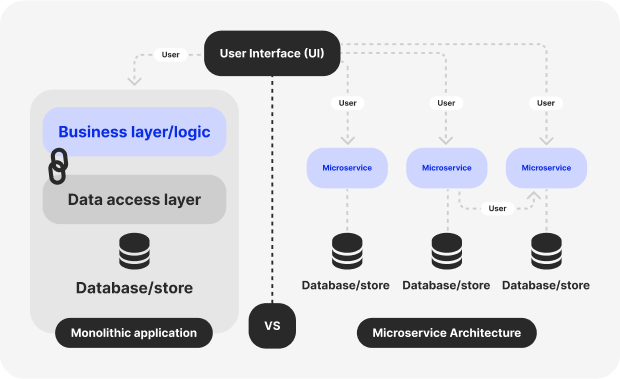
Due to the fact that the parts of the application are autonomous, it is easy to develop and update, like any distributed system: adding or improving individual functions will not affect the other components.
This is the main difference between a microservice application and a monolithic one, where all code blocks are interconnected, and even small changes in at least one of them will change the operation of the entire system.
Testing Pipeline (Test Driven Development)
Software testing is an automatic (or sometimes manual) procedure that allows you to confirm or deny the code operability and correctness of its operation to evaluate its quality.
When testing, the application is given input data and is requested to execute some command, after that, the obtained results are checked for compliance with the standard; if the result corresponds to the expected one, the test is considered passed.
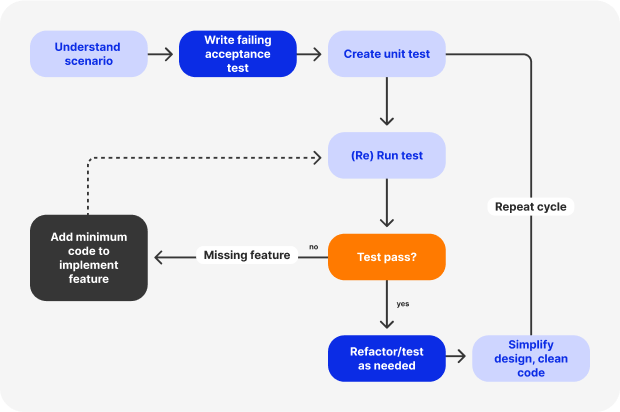
The methodology of development through testing consists of organising automatic testing of developed applications by writing unit, integration and functional tests that define requirements to the code just before writing this code. This methodology is always applied by companies providing software development as a service.
Kubernetes Technology
Kubernetes is a portable, extensible, open-source platform for managing containerised workloads and services that facilitates both declarative configuration and automation offered by many offshore software companies today.

Because Kubernetes operates at the container level rather than the hardware level, it has certain generally applicable capabilities common to PaaS, such as deployment, scaling, load balancing, logging, and monitoring.
However, Kubernetes is not a monolithic solution, so these capabilities are optional and pluggable by default. Kubernetes has components to create a developer platform, but it retains user choice and flexibility where it matters.
Hiring Cloud Solutions and Services
For the possibility of effective analysis of each candidate for work in your company, there are specialised professional services that help to manage personnel while conducting a comprehensive study, accounting, storage, organisation, and interpretation of all data about each employee, which allows you to have a clear idea of what each person is in terms of work experience, knowledge and other skills required to perform certain duties.
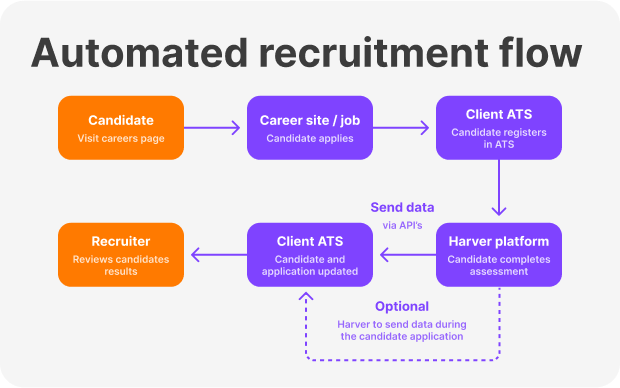
Agile Software Development and OKR Practice
Agile development methodology is a series of software building approaches focused on using interactive building and dynamic requirements generation and ensuring their implementation due to constant interaction within self-organising working groups of specialists of different profiles.
Several methodologies belong to the class of agile development methodologies, particularly extreme programming, DSDM, Scrum, and FDD, which have already been mentioned above.
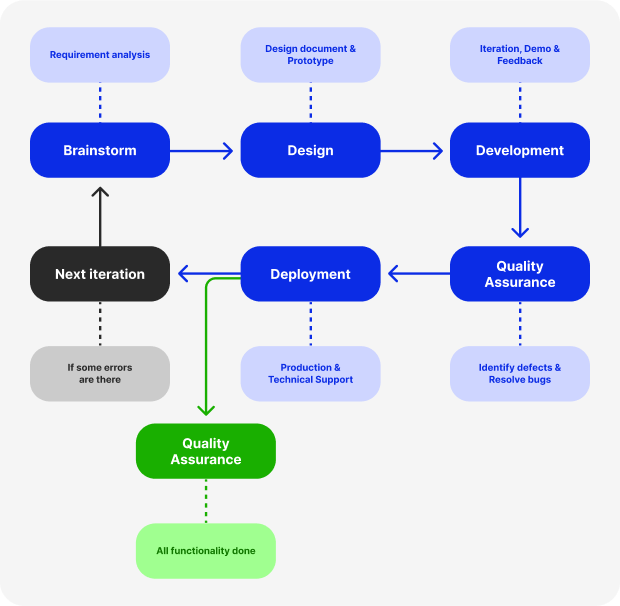
Any agile software development company is also able to offer other practical solutions that work following OKR practices to achieve the same goal of ensuring compliance with DevOps principles.

Design Project Solutions
To develop a high-quality and unique design solution and corporate appearance of all products and systems of the company, modern products are used to create a graphic project, which takes into account all the pre-requisites and wishes of the business, as well as the specifics of its work, including also the individual characteristics of each individual product or solution of the company.
Tech Radars
For proper organisation and unification of all software resources available in the company’s use, including programming languages, databases, integration solutions, APIs, etc., specialised services are used that help to rank and catheterise all products by a certain feature or criterion, which helps to have a clear picture of the overall structure of the entire production cycle.
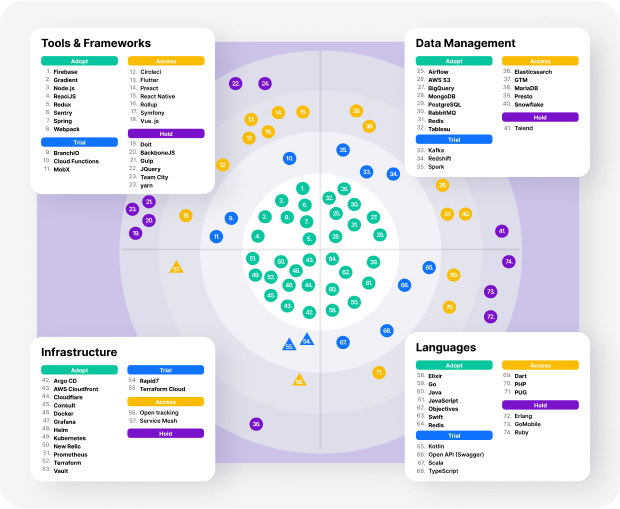
Client Management Software
Tools and software for client management are used to ensure a smooth process of working with the client base, efficient processing of information about it, and convenient interaction with other secondary systems of client accounting.
Such software is a classic CRM system that offers a complete set of necessary solutions for managing all aspects of cooperation with the company’s clients. If desired, the company can create its own CRM or use the services of the outsourced development team.
Conclusion
In-house software development is an essential element in the business processes of any company that wants to have a favourable market position among competitors and offer its customers an exceptional experience with its products, solutions, and services.
It is an excellent opportunity to acquire the necessary skills, knowledge, and experience in building and programming to overcome problems and difficulties in the work process.

